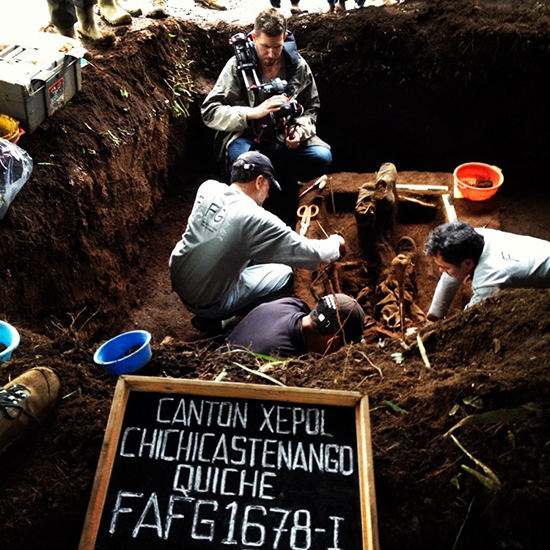Guatemalan Genocide
The Fundación de Antropología Forense de Guatemala (FAFG) has collected more than 500 video interviews from Guatemalan survivors and witnesses in Guatemala. All conducted in Spanish or K’iche’, the testimonies are being preserved and indexed by USC Shoah Foundation, which began adding them to the Visual History Archive in 2016. Currently there are 32 testimonies searchable in the Visual History Archive. FAFG continues to collect and grow the Guatemalan testimonies and collection.
About the Collection
The Guatemalan Genocide refers to the killings of civilians, especially those of Mayan origin, as part of counter-insurgency operations during the 1960-1996 Guatemalan Civil War. While massacres took place in 1966-1967, the most intensive period of killings was from the Panzós massacre in 1978 until 1983. The VHA currently contains 32 interviews with survivors to the Guatemalan Genocide recorded by the Fundación de Antropologia Forense de Guatemala (13) and the USC Shoah Foundation (1). These interviews were recorded in 2015 in Guatemala (13) and the United States (1).
Brief Historical Background
Guatemala’s 36-year civil war devastated the Central American country in many ways, but one particularly brutal campaign by the government’s army stands out. An estimated 150,000 people—many of them rural villagers—were killed or “disappeared” in a three-year-long campaign to extirpate an ethnic group suspected of supporting antigovernment rebels.
As the Guatemalan civil war was about to enter its third decade in 1980, the army instituted “Operation Sophia,” which sought to undermine anti-government guerrilla by terrorizing or killing civilians whom the army suspected were supporting the insurgents. The primary targets were descendants of the Maya, whose indigenous civilization dominated the region until the arrival of Spanish conquistadors in the 16th century.
From 1980 to 1983, the army, supplemented by private “death squads” hired by wealthy landowners, systematically razed more than 400 villages, torching buildings and crops, slaughtering livestock, poisoning water supplies, and killing or abducting whomever they pleased. People who were snatched off the street or dragged out of their homes were often summarily executed and dumped in unmarked graves. They are called the “disappeared.”
At the same time, more than 100,000 women, most of them Maya, were raped, a United Nations commission later concluded. Amid the terror, as many as 1.5 million refugees—more than one in five people then living in the country—fled their homes. Around 200,000 people left the country entirely, crowding into refugee camps in southern Mexico.
Fundación de Antropología Forense de Guatemala

About the Collection
A short introduction to the Guatemala Genocide collection preserved at USC Shoah Foundation
Related Articles





